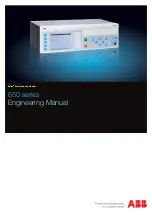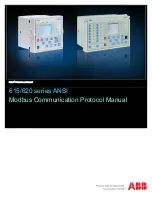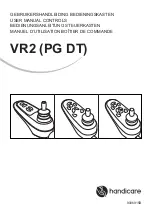
NOVA electronics Inc.
MCX514 -
113
-
113
-
3.2
Circular Interpolation
Any 2 axes of the 4 axes can be set for circular interpolation.
In the orthogonal coordinates on the right figure, 2 axes are each set to the
ax1 axis (horizontal axis) and ax2 axis (vertical axis) in order of priority
X>Y>Z>U, the higher priority axis is set to ax1 axis and the lower priority
axis is set to ax2 axis. The right direction of ax1 (horizontal axis) is +
direction, and the upper direction of ax2 (vertical axis) is + direction.
If X and Y axes are selected, X axis becomes ax1 (horizontal axis) and Y
axis becomes ax2 (vertical axis).
The user can reverse the axes by interpolation mode setting.
To execute circular interpolation, set the center point coordinates of a
circular arc and the finish point coordinates relative to the present point
coordinates (start point), and write CW or CCW circular interpolation driving command, then circular interpolation will be
performed. The center and finish point coordinates must be set by the relative value to the present point coordinates.
In Fig. 3.2-1 CW circular interpolation, it explains the definition of CW and CCW circular interpolations. The CW circular
interpolation is starting from the start point to the finish point in clockwise direction; the CCW circular interpolation is in
counter-clockwise direction. When the finish point is set to (0, 0), a full circle will come out.
In Fig. 3.2-2, it explains the long axis and short axis. We define 8 quadrants in the X-Y plane and put the number 0~7 to each
quadrant. As shown in the figure, the absolute value of ax1 is always larger than that of ax2 in quadrants 0, 3, 4 and 7, and it is
defined ax1 is the long axis and ax2 is the short axis in these quadrants. In quadrants 1, 2, 5 and 6, ax2 is the long axis and ax1 is
the short axis. The short axis outputs pulses regularly, and the long axis outputs or does not output pulses depending on the
interpolation calculation.
In Fig. 3.2-3, it is an example to generate a full circle of radius 11 with the center point (-11,0) and the finish point (0,0). And Fig.
3.2-4 shows the pulse output at that time.
0
1
2
3
4
5
6
7
ax1
ax2
ax2
ax2
ax2
ax2
ax1
ax1
ax1
ax1
X
Y
track of interpolation
solid line: circle with radium 11
dash line: circle with radium 11 1
start point / finish point
0
1
2
3
4
5
6
7
CCW
(ax1, ax2)
The range of the center and finish point coordinates is -1,073,741,823
~
+1,073,741,823 from the current position. The position
tolerance for the specified circular curve is ±1 LSB within the entire interpolation range. The interpolation speed is within the
range from 1PPS to 8MPPS.
Fig. 3.2-1 CW/CCW circular interpolation
Fig. 3.2-2 The 0~7 Quadrants And Short Axis Fig. 3.2-3 Example of CircularInterpolation
Fig. 3.2-4 Example of Pulse Output in Circular Interpolation Driving
ax1
ax2
Center point
Finish point
Finish point
CCW circular interpolation
CW circular interpolation
Start point
Start point
XPP
XPM
YPP
YPM
1
0
2
3
4
5
6
7
Quadrant
















































